Down-regulation of STAT3 enhanced chemokine expression and neutrophil recruitment in biliary atresia
- PMID: 33769466
- PMCID: PMC8035628
- DOI: 10.1042/CS20201366
Down-regulation of STAT3 enhanced chemokine expression and neutrophil recruitment in biliary atresia
Abstract
Biliary atresia (BA) is an immune-related disorder and signal transducer and activator of transcription 3 (STAT3) is a key signalling molecule in inflammation. The present study was designed to clarify the function of STAT3 in BA. STAT3 expression was examined in patients and a mouse BA model in which STAT3 levels were further altered with a specific inhibitor or activator. Neutrophil accumulation and the levels of the neutrophil chemoattractants (C-X-C motif) ligand 1 (CXCL1) and IL-8 were determined. The effects of STAT3 inhibition on IL-8 expression were examined in human biliary epithelial cell (BEC) cultures. Functional changes in liver STAT3+ neutrophils in the mouse model were analysed with 10× single cell RNA-seq methods. Results showed STAT3 and p-STAT3 expression was reduced in BA liver tissue compared with control samples. Administration of a STAT3 inhibitor increased jaundice and mortality and reduced body weight in BA mice. In contrast, the STAT3 activator ameliorated BA symptoms. Extensive neutrophil accumulation together with CXCL1 up-regulation, both of which were suppressed by an anti-CXCL1 antibody, were observed in the STAT3 inhibitor-treated group. Recombinant IL-8 administration increased disease severity in BA mice, and the STAT3 activator had the reverse effect. Inhibiting STAT3 increased apoptosis of human BECs together with up-regulated IL-8 expression. RNA-seq analysis revealed reduced the numbers of STAT3 expressing neutrophil in BA which was accompanied by marked enhanced interferon-related antiviral activities. In conclusion, STAT3 reduction, enhanced IL-8 and CXCL1 expression and promoted the accumulation of interferon-responsive neutrophils resulting in BEC damage in BA.
Keywords: Biliary atresia; Neutrophil chemoattractants; STAT3.
© 2021 The Author(s).
Conflict of interest statement
The authors declare that there are no competing interests associated with the manuscript.
Figures
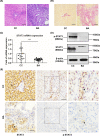
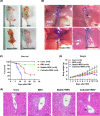
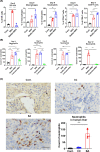
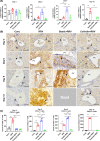
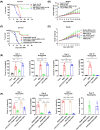
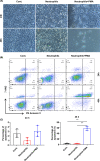
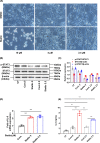
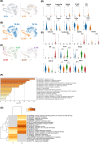
Similar articles
-
Vitamin D3/VDR alleviates double-stranded RNA virus -induced biliary epithelial cell damage by inhibiting autophagy.BMC Gastroenterol. 2025 Jan 29;25(1):44. doi: 10.1186/s12876-025-03640-5. BMC Gastroenterol. 2025. PMID: 39881269 Free PMC article.
-
LRG1 facilitates corneal fibrotic response by inducing neutrophil chemotaxis via Stat3 signaling in alkali-burned mouse corneas.Am J Physiol Cell Physiol. 2021 Sep 1;321(3):C415-C428. doi: 10.1152/ajpcell.00517.2020. Epub 2021 Jul 14. Am J Physiol Cell Physiol. 2021. PMID: 34260299
-
Interleukin 17, Produced by γδ T Cells, Contributes to Hepatic Inflammation in a Mouse Model of Biliary Atresia and Is Increased in Livers of Patients.Gastroenterology. 2016 Jan;150(1):229-241.e5. doi: 10.1053/j.gastro.2015.09.008. Epub 2015 Sep 25. Gastroenterology. 2016. PMID: 26404950
-
The Role of Neonatal Gr-1+ Myeloid Cells in a Murine Model of Rhesus-Rotavirus-Induced Biliary Atresia.Am J Pathol. 2018 Nov;188(11):2617-2628. doi: 10.1016/j.ajpath.2018.07.024. Epub 2018 Sep 8. Am J Pathol. 2018. PMID: 30201498
-
Deletion of C-C Motif Chemokine Ligand 5 Worsens Invariant Natural Killer T-Cell-Mediated Hepatitis via Compensatory Up-regulation of CXCR2-Related Chemokine Activity.Cell Mol Gastroenterol Hepatol. 2019;7(3):623-639. doi: 10.1016/j.jcmgh.2018.12.009. Epub 2019 Jan 7. Cell Mol Gastroenterol Hepatol. 2019. PMID: 30630119 Free PMC article.
Cited by
-
Molecular Mechanisms of Fibrosis in Cholestatic Liver Diseases and Regenerative Medicine-Based Therapies.Cells. 2024 Dec 3;13(23):1997. doi: 10.3390/cells13231997. Cells. 2024. PMID: 39682745 Free PMC article. Review.
-
A novel model based on immune-related genes for differentiating biliary atresia from other cholestatic diseases.Pediatr Surg Int. 2022 Dec 11;39(1):45. doi: 10.1007/s00383-022-05322-9. Pediatr Surg Int. 2022. PMID: 36502440
-
Interleukin 8-CXCR2-mediated neutrophil extracellular trap formation in biliary atresia associated with neutrophil extracellular trap-induced stellate cell activation.Hepatology. 2025 Sep 1;82(3):552-565. doi: 10.1097/HEP.0000000000001195. Epub 2024 Dec 18. Hepatology. 2025. PMID: 39693274
-
Adenosine A2A Receptor Suppressed Astrocyte-Mediated Inflammation Through the Inhibition of STAT3/YKL-40 Axis in Mice With Chronic Cerebral Hypoperfusion-induced White Matter Lesions.Front Immunol. 2022 Feb 14;13:841290. doi: 10.3389/fimmu.2022.841290. eCollection 2022. Front Immunol. 2022. PMID: 35237278 Free PMC article.
-
Toll-Like Receptor 2 Attenuates the Formation and Progression of Angiotensin II-Induced Abdominal Aortic Aneurysm in ApoE-/- Mice.J Vasc Res. 2024;61(6):304-317. doi: 10.1159/000541651. Epub 2024 Oct 28. J Vasc Res. 2024. PMID: 39467520 Free PMC article.
References
Publication types
MeSH terms
Substances
LinkOut - more resources
Full Text Sources
Other Literature Sources
Miscellaneous

